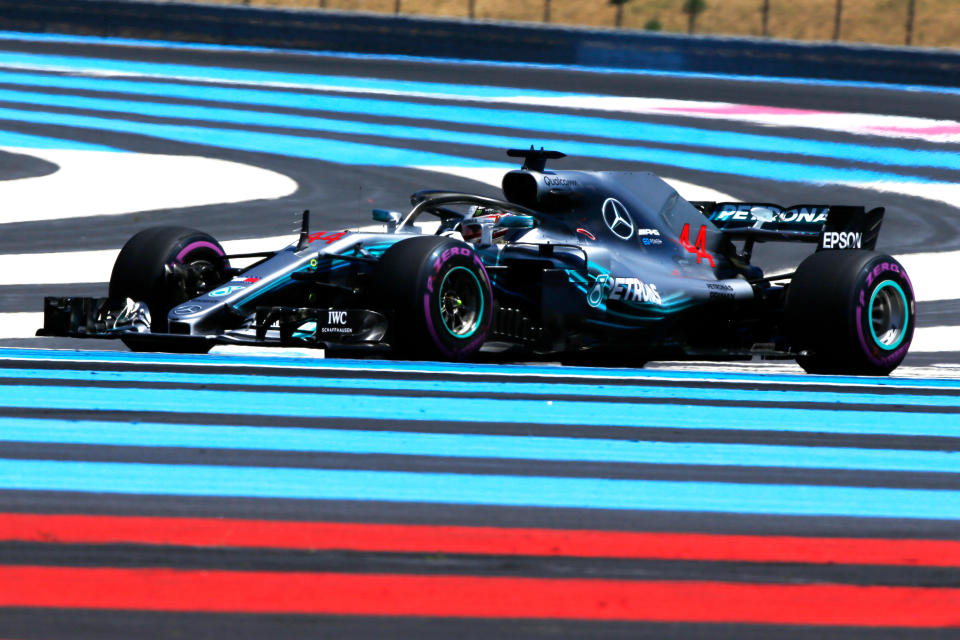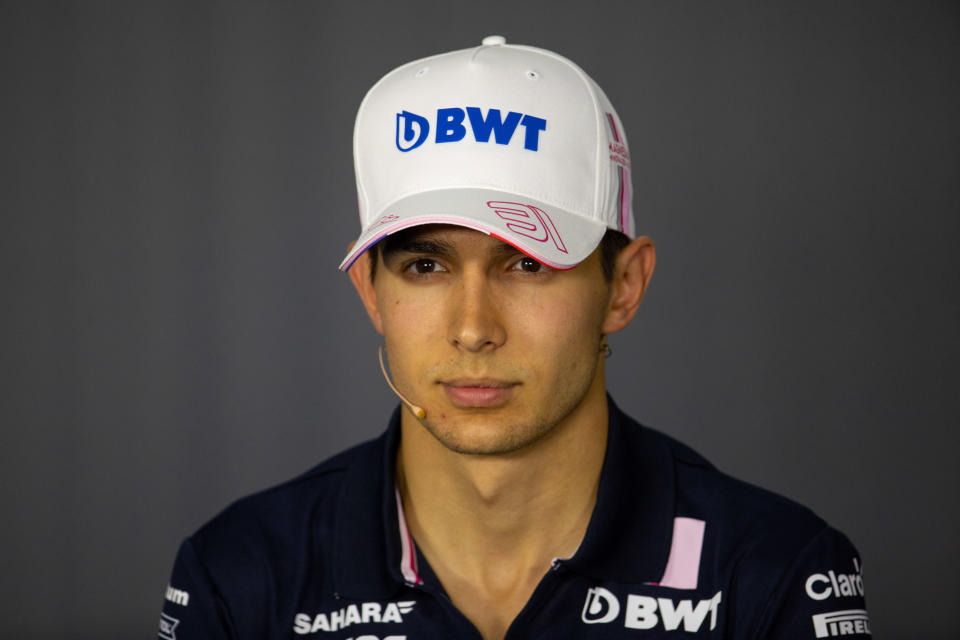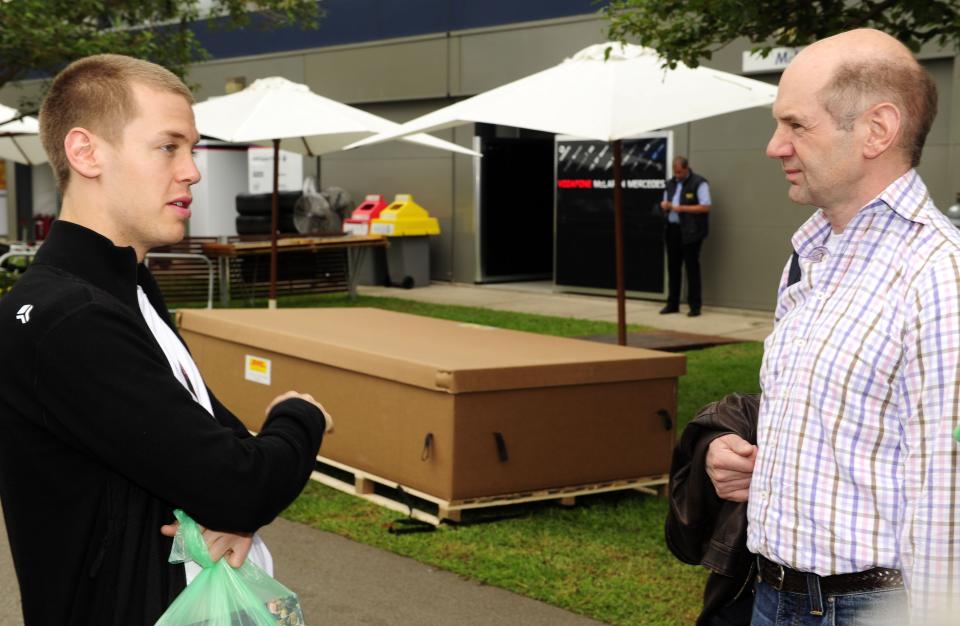French Grand Prix: A Gallic blast from F1's past

It’s ten years since France last hosted an F1 race, subsequently falling victim to Bernie Ecclestone’s autosport avarice despite having hosted the first ever Grand Prix back in 1906.
This year’s race is being held at the Paul Ricard circuit – and it hasn’t seen F1 action since 1990.
To put that in some context, that was the year Nelson Mandela was released from prison, Britain was gripped by Poll Tax riots and the World Health Organisation removed homosexuality from its list of diseases.
Truly, Circuit Paul Ricard is from a different age.
An old track? Isn’t F1 obsessed with new venues?
It is a tad unusual for a track to return to F1 usage after such a long break but it’s only a few miles from the Mediterranean coast so no one who turns up is going to complain.
If French hotels don’t tickle your fancy, there’s ample space to moor your big boat. In fact, Lance Stroll’s dad has parked his posh pedalo Faith off the coast – it’s as long as a modest footie pitch and, at $200million, is worth almost a tenth of Stroll Snr’s wealth (well, before he started bankrolling Lance at Williams).

Paul Ricard itself is one of those circuits that sort of divides fans – well, those who can remember that far back.
In terms of layout, it’s closest to the Circuit de Barcelona-Catalunya, where the Spanish Grand Prix resides.
Originally, it was dominated by the 1.1mile Mistral straight, but organisers popped a chicane in the middle and, despite rumours that the full straight would be used for F1, it’s two shorter straights for this year’s race.
Hey-ho, that might mean extra overtaking opportunities, and it will certainly ease the load on those F1 engines.
Who’s favourite?
No one, not with the season we’ve had so far.
On paper, the track’s similarity to Barcelona should make Mercedes strong favourites – they took a dominant 1-2 in Spain this year (where the same ‘shaved’ tyres were used as are being fitted in France), and Ferrari had a horrible weekend.

Additionally, Merc are bringing upgraded engines to France, which is never good news for the opposition.
However, the momentum is with Ferrari and Sebastian Vettel, after he owned the Canadian Grand Prix a couple of weeks ago. Let’s see who manages the tyres best (sigh…) – expect the bulk of the action to be on purple ultrasofts, with a stint on red supersofts.
Red Bull may benefit from a fuel upgrade, though the discussion around them will most likely focus on the wisdom of their decision to dump Renault power and swap to Honda next season.
Talking of power units…
Who’d be an engine here?
Even with that chicane, the Mistral straight is a test for the power units.
Cars may well hit 215mph, and the sustained high revs will make engineers nervous, particularly for those running older units.

Back in 1990, the last F1 race at Paul Ricard featured V10s and V12s, pumping out 670-690hp (and plenty of noise), compared with almost 1,000hp today.
They revved around 12,500-13,000rpm – which isn’t that different to today’s cars, which tend to stick below 12,500rpm because of fuel flow restrictions.
But it’s not a place to take a risk with a weak power unit.
Don’t forget F1’s French quartet
This is a home race (sort of) for four (sort of) F1 stars (sort of).
Esteban Ocon, Charles Leclerc (OK, he’s Monegasque but that’s close enough), Pierre Gasly and Romain Grosjean (who’s a bit Swiss too) finished 9th, 10th, 11th and 12th respectively in Montreal.
Ocon is good enough to be tipped for a Renault drive, while Leclerc has already established himself as an F1 talent in his rookie year, building on a superb reputation from his F2 and GP3 days.

Gasly is dominating his team-mate Brendon Hartley, and in Canada he fought from the back of the grid for yet another admirable result (and he won’t forget that fourth-place in Bahrain anytime soon).
And then there’s the mercurial Grosjean, who also started on the back row in Canada, and whose ability to shine in an F1 car is matched only by his ability to shonk in an F1 car.
They’re all well matched and will all fancy a bit of glory at F1’s return to France. Factor in the two Renaults (with non-French drivers, admittedly) and there are at least six cars for the home crowd to cheer on.
A lesson in F1 aerodynamics
That 1990 race at Paul Ricard ended with Ferrari’s Alain Prost on the top step of the podium, McLaren’s Ayrton Senna in third – and Leyton House driver Ivan Capelli sandwiched between the two greats.
Leyton what?
Leyton House – formerly the March team – was a small outfit but they had a secret weapon.
His name was Adrian Newey, and he was the designer of the CG901.

The car was usually nothing special – in fact, Capelli finished only four races in 1990 – but on smooth circuits, a little magic took place.
Newey had worked hard on the aerodynamics of the Leyton House and it was that aero trickery, coupled with some clever driving (Capelli nursed his tyres so he didn’t have to pit) that so nearly brought victory to the minnows.
Only an oil pressure problem three laps from the end denied them first place.
As for Newey, he had just moved to Williams, where his way with aero would set the standards for car design in the years ahead – notably with Red Bull.
This weekend, we’ll see again whether Red Bull’s clever aero and chassis is a match for the raw grunt of Mercedes and Ferrari power – and whether Circuit Paul Ricard really has what it takes to pass muster as a 21st-century F1 venue.


